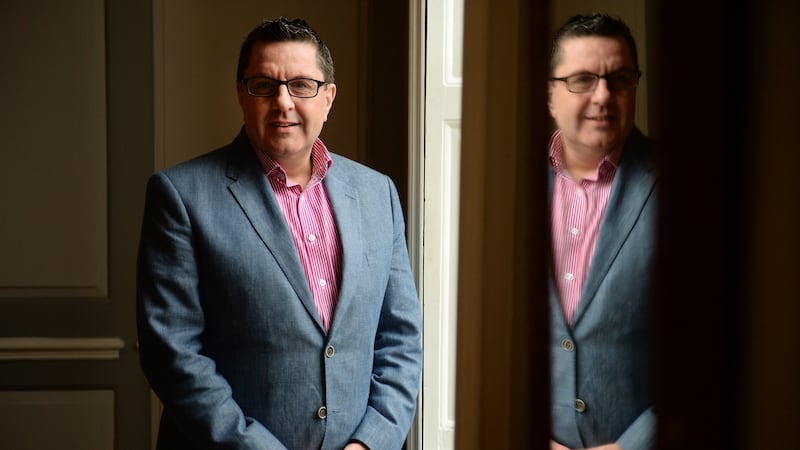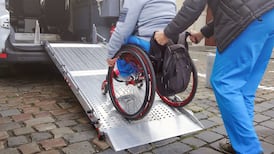A beautifully proportioned 17th-century house in north Dublin is perhaps an unlikely home for a campaign to eradicate bullying in schools around the State.
But Belvedere House, with its elegant, restored rooms, is part of Dublin City University's St Patrick's campus in Drumcondra and has been home to the National Anti-Bullying Centre (ABC) since 2014.
The centre's director, Prof James O'Higgins Norman, who greets us in the white, porticoed entrance to the building, holds a prestigious UNESCO chair on Tackling Bullying in Schools and Cyberspace.
When something like bullying occurs, it is a tremendous knock for the parents, traumatic for the child who is bullied and a cause of deep concern for the school
He is spearheading FUSE, a new anti-bullying and online safety programme devised at the centre for implementation by students, parents and school staff. The name comes from the idea that it is "fusing together all the concerns and energies of the people involved" and its aim is to empower children and teenagers to police themselves, knowing teachers and parents are in the background as a support.
According to ABC meta-analysis, 26 per cent of primary school children in the country say they have been bullied offline and 13 per cent online. In post-primary schools, 12 per cent of pupils report having been bullied offline, 10 per cent online.
All parents send their children out to school every day, hoping they will be happy and do well, he points out. “When something like bullying occurs, it is a tremendous knock for the parents, traumatic for the child who is bullied and a cause of deep concern for the school. That is why in our FUSE programme we want to bring all three together to work together.”
With online bullying now the norm, children and teenagers can be targeted at all times, increasing the intensity of the victimisation. It is also highly challenging for schools, who can no longer regard the perimeter of the school yard as the boundary of their responsibilities for keeping children safe.
When dealing with bullying, schools have to be sensitive both to the rights of the person who is targeted but also to the one who is acting out in a bullying way – that child may be doing it as a result of trauma in their own life, he explains. Once parents get involved, it becomes very emotive.
“All of a sudden the school is not just dealing with the two kids involved, it is dealing with two sets of parents, extended families and sometimes a conflict in the local community can spill into the school, or vice versa.”
A quick and decisive response by the school will reduce the reach of the bullying.
Since the national action plan on bullying was published by the Department of Education in 2013, every school is required to have identified an appropriate anti-bullying programme and adapted it for its use.
“We know from our research that half the schools have done that and are doing it well; the other half are struggling to do that. They say they don’t know where to start; they don’t have the time; it’s a resource issue.”

O'Higgins Norman and his colleagues hope that FUSE will pave the way, with €1 million in funding from Facebook enabling them to offer it to all 700-plus secondary schools in the State over the next three years. Meanwhile, the programme will be extended as a pilot into 41 primary schools next year, with the support of the Social Innovation Fund Ireland.
While bullying can happen at any age, its incidence peaks from about fourth or fifth class in primary school to second or third year in secondary school, roughly ages 10-15. There are both psychological and sociological perspectives to the phenomenon.
“When we look at it from a psychological perspective, people who bully are often operating out of traumatised emotions or coming from a home where aggression is the norm,” he says. “Looking at it from a sociological perspective, we know when young people experience difference and they don’t understand it, they can sometimes act in a way that is aggressive.”
He remembers when he was a teacher himself, more than 20 years ago, the first child of colour came to the Dublin school in which he was working at the time. “We welcomed that child as teachers and placed her in a classroom and continued with the teaching day. By the end of the day, that child was outside in the yard, up a tree, with kids throwing stones at her.”
As he sees it, the fault lay with the school staff. “We hadn’t prepared the kids enough to know that a child of colour was the same as them.” In his career in research since then, he has seen it proven that diversity education reduces bullying.
In Victorian times, bullying was seen as part of growing up, a "toughening up" process for boys, as depicted in the 1857 novel, Tom Brown's School Days, by Thomas Hughes. However, in these more enlightened times, when we know much more about the causes and effects, schools today must reinforce a message of zero tolerance for bullying.
I think we need heroes who are positive role models, who inspire kindness and inclusion. If we can highlight those role models in our school community, that can also have a positive impact
Not that they are helped in this regard by some of the world’s most prominent role models. For example, there were reports of a surge in school bullying across the United States in the wake of the 2016 presidential election.
To take a closer look, researchers in Virginia analysed a "school climate" survey taken by 150,000 students across their state. Looking at student responses around bullying from 2015 to 2017, they found higher rates of bullying and teasing in areas that voted for Donald Trump compared with those that voted for Hillary Clinton.
There had been very little difference in 2015 but, by 2017, student responses suggested that bullying rates were 18 per cent higher in areas that voted for Trump than in areas that supported Clinton.
Trump exhibits “quite classic” bullying behaviour “and that has an effect on the ground”, says O’Higgins Norman. Today’s role models in politics, celebrity culture and reality TV are often the most aggressive individuals around.
“I think we need heroes who are positive role models, who inspire kindness and inclusion. If we can highlight those role models in our school community, that can also have a positive impact.”
In September, the first batch of 160 teachers from 90 secondary schools came here, to anti-bullying HQ, to start their FUSE training to become “anti-bullying” champions. Their “mission” includes briefing colleagues on their return and running a series of six workshops with second-year students. The young people’s practical projects will include presenting an anti-bullying information evening to parents.
Research shows that a whole-school approach, led by the students, is what is most effective in countering bullying. Yet “sometimes adults want to rush in with solutions because it is intuitive for us to want to protect children,” he says.
The “peer-to-peer element is really important”, says Amy McArdle, safety policy manager at Facebook. The company constantly hears during youth consultations “that there is nobody better placed to talk to young people about issues impacting young people’s lives than young people themselves”.
Facebook is funding FUSE because it wants to increase awareness around bullying and its impact on young people particularly, “to increase reporting and ultimately reduce incidents of bullying on our platform”.
As to those who might take a jaundiced view of high-profile funding coming from a multi-billion dollar social media company that could be seen as part of the problem, she responds: “I wouldn’t agree that we are part of the problem but rather the problem, which has existed long before the internet and long before social media, can manifest on our platform. What we are doing is taking our responsibility in that regard very seriously.
"We know there is no 'silver bullet' that can ensure young people's safety in any context so we apply a five-point approach: policies, tools, resources, feedback from users and partnerships with experts," says McArdle, adding that its bullying prevention hub is there to guide young people, parents and educators alike.
While O’Higgins Norman is bullish about his belief that bullying and cyber bullying can be eradicated from schools with a concerted effort by all, he concedes that even if that was done in every school in the country today, new children will arrive next September.
“So, eradication would only be temporary” – unless the anti-bullying message is constantly reinforced.
And that starts in the home.
Read: Bullying in school: 7 things a parent should know











